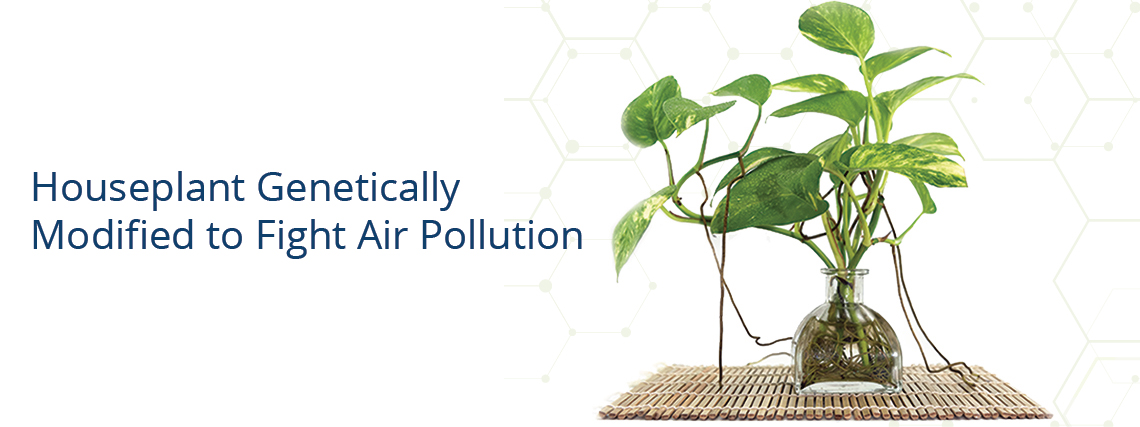Common Houseplant Genetically Modified to Fight Air Pollution
HEPA filters are commonly used in homes to filter air pollution such as pollen, pet dander, and tobacco smoke. But there are pollutants that are too small and pass right through the filter. A research team at the University of Washington have modified a common houseplant to help remove small hazardous compounds indoors.
Chloroform and benzene are hazardous are two pollutants found indoors that are far too small to be filtered by HEPA.
Pothos ivy, a common houseplant has been genetically modified to filter chloroform and benzene from the air. A protein found in pothos ivy called 2E1 is responsible for transforming chloroform and benzene into molecules used to help its growth has been modified.
“People haven’t really been talking about these hazardous organic compounds in homes, and I think that’s because we couldn’t do anything about them,”
said senior author Stuart Strand
The team used a protein present in all mammals called cytochrome P450 2E1 or 2E1 for short to achieve air filtration. In humans, 2E1 turns benzene into phenol and chloroform and into carbon dioxide and chloride ions. Unforatinitly, E21 is located in our livers and it is not available to help with processing pollutants in the air.
E21 is activated in our livers when alcohol is consumed. A process dubbed “green liver” is a concept to recreate the breakdown of alcohol outside of the body in a plant. Not only will this process active 2E1 to remove pollutants, but will also provide the plant with carbon dioxide and chloride to make its food.
A synthetic version of the gene was introduced into pothos ivy allowing each cell in the plant to be modified.
Tests were conducted to determine how efficient their modified house plant removed pollutants from the air compared to a normal pothos ivy. Over an 11 day period, their modified plant and a normal plant were placed in tubes and subjected to benzene or chloroform gas.
The teams modified plants were able to filter the concentration of chloroform by 82% after three days and benzene gas had dropped by 75% after eight days. The concentration of chloroform or benzene in the normal plants had not changed.
Stuart Strand stated that these modified plants would need to be placed inside an enclosure with a constant airflow in order to optimize the air filtration in a home.
The team is currently working on improving the plants’ capabilities to break down another hazardous molecule, formaldehyde. Formaldehyde is commonly found in laminate flooring and cabinets and tobacco smoke.
Follow UW News to stay updated on the teams’ progress on their research. Read Full UW article.

